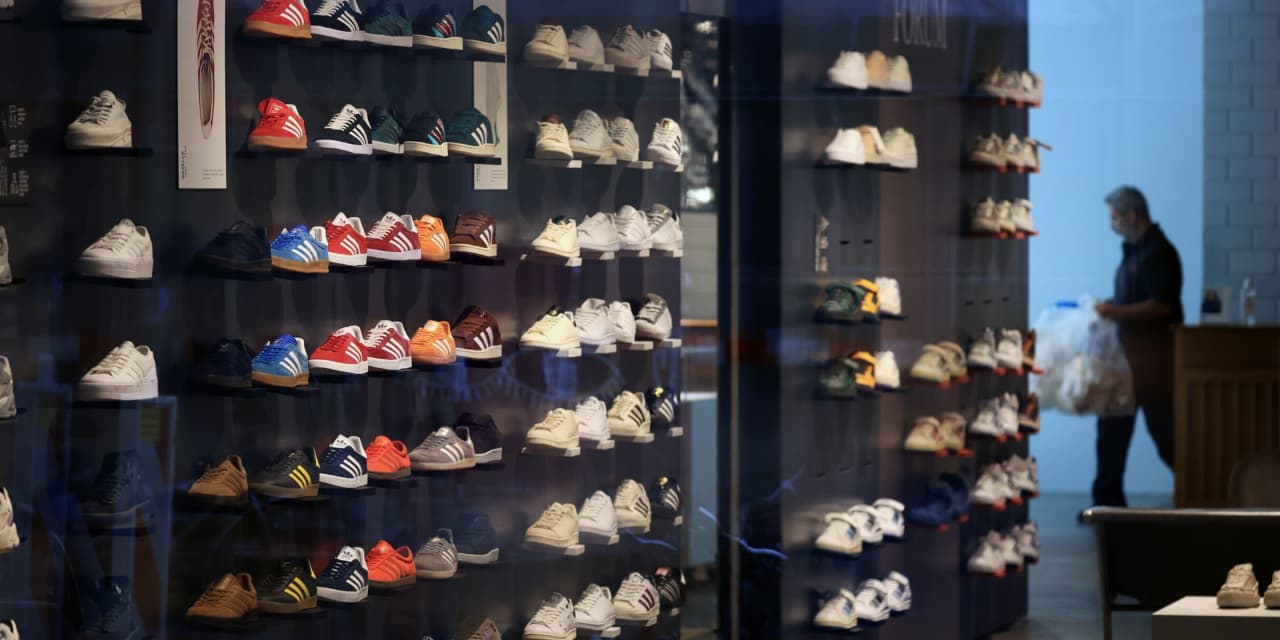As goes September, so goes December.
At least, that is often the case when it comes to retail: Back-to-school sales can provide a fair bit of insight about the following holiday shopping season. And the news from September wasn’t good.
While the rate of inflation has declined, prices remain well above where they stood several years ago, forcing parents to spend with restraint. Sales of athletic shoes, for which the return-to-school season is even more crucial than Christmas, tell the story.
“BTS is the most important shopping period for sports footwear, and a good indicator of demand into Black Friday,” wrote Bernstein analyst Aneesha Sherman in a recent look at the industry. While back-to-school shopping began well, with year-over-year gains in sales of sports footwear at percentages in the mid single digits, sales were flat in August and were even weaker in September.
“A lackluster BTS season is a red flag for consumer demand, and we expect another promotional Holiday period this year,” she wrote.
Sherman said recent discussions with the chief commercial officer at a leading industry brand point to retailers ordering less going into 2024. That will put more pressure on brands themselves to hold inventory and drive sales, exposing them to more risk.
Other analysts have warned that excess supplies held by brands could be a problem for the industry, and its 800-pound gorilla,
Nike
(ticker: NKE). “While Nike seems to be in a better inventory position than other brands, there remains excess product in the market that likely results in elevated promotions through the holiday season,” wrote Telsey Advisory Group’s Cristina Fernández on Friday.
It isn’t surprising that department stores and other outlets would hesitate to buy aggressively given that excess inventories weighed on retailers nearly across the board in 2022. That margin-crunching experience understandably made them wary of taking on too much again.
On the positive side, the fact that retailers are more cautious about inventories means that despite her caution about discounts to come, Sherman believes 2023’s holiday season will be “nowhere near as promotional as last year.”
Still, that is a relatively low bar. While Sherman kept Outperform ratings on both Nike and the American depositary receipts of Adidas (ADDYY), with price targets of $134 and $118.23, respectively, she noted that they could feel the pinch as retailers and parents appear hesitant to snap up their shoes.
Both companies are on the back foot in any case as they try to claw back market share in the specialty running category from players like
Deckers
Outdoors’ (DECK) Hoka brand and On’s (ONON) eponymous sneaker.
Barron’s has recommended Deckers and more recently On, because of their ability to take market share and demand high prices. Both stocks have outperformed their benchmarks since those articles were published.
While the back-to-school season was so-so for the industry overall, premium shoes—like those made by Hokan and On—are “driving the growth, while demand declines for mainstream / low-end products,” Sherman wrote.
Data from
FactSet
show that in recent months, analysts have been lowering their earnings per share estimates for Nike for its fiscal first and second quarters, as well as this fiscal year and next.
On Monday, Jefferies analyst Randal Konik cut his rating on Nike to Hold from Buy, lowering his target for the stock price by $40 to $100. Konik said he is concerned that inventory levels will remain a challenge for the company, particularly because his survey work indicates that “US consumers are likely to reduce spending ahead, with apparel and footwear being the most likely areas of pullback.” His colleague Corey Tarlowe downgraded
Foot Locker
(FL), which gets a large portion of sales from Nike, citing the same pressures.
Last week, even bullish analysts offered fairly tepid previews of Nike’s results for its fiscal first quarter, which the company will disclose on Thursday. Baird analyst Jonathan Komp said he sees “limited upside potential” for the report, and that even as the picture improves, “patience [is] probably still required.” Morgan Stanley analyst Alex Straton wrote that the results are likely to be largely in line with expectations, and that the report may be “a non-event.”
A nonevent would be better than the disappointing results that have weighed on Nike’s shares this year. But as the results due this week cover the three months through the end of August, they won’t cover the whole back-to-school season.
If past is prologue, investors could feel the chill this winter.
Write to Teresa Rivas at [email protected]
Read the full article here









